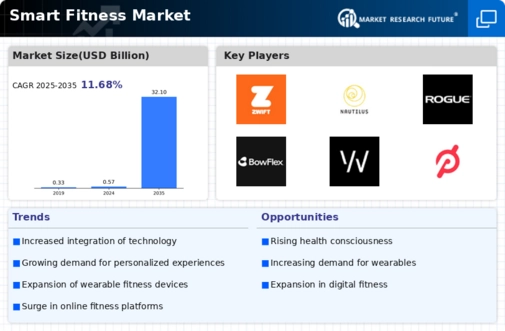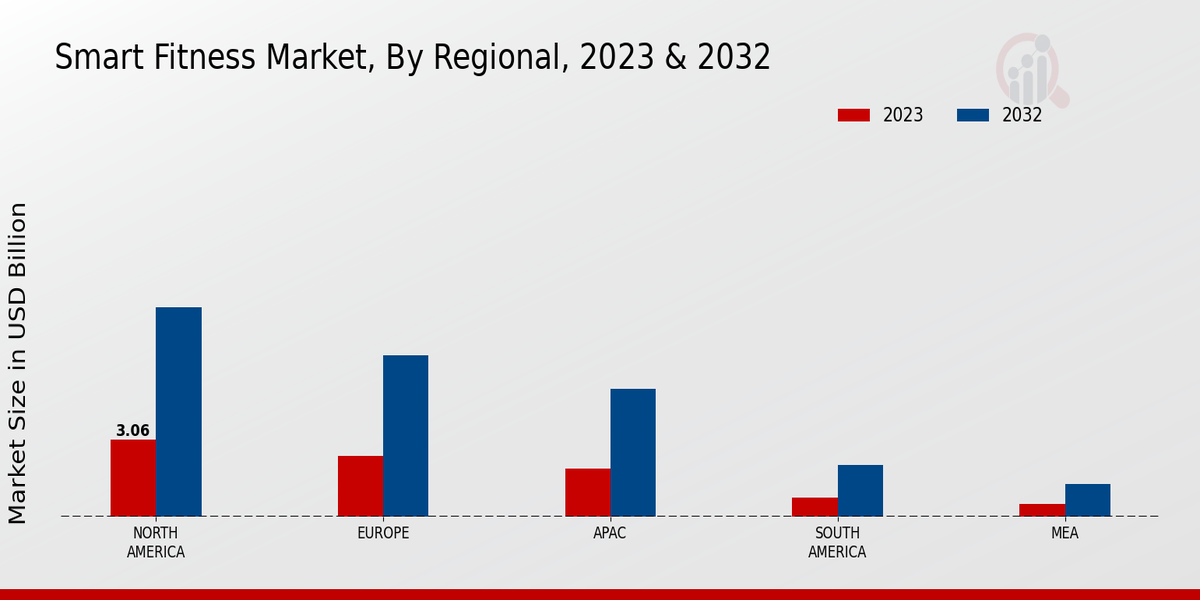Charts Only
Rising Health Awareness
Increased health awareness among consumers is a significant driver of the Global Smart Fitness Market Industry. Individuals are becoming more conscious of their physical well-being, leading to a surge in demand for smart fitness solutions that promote active lifestyles. This trend is evident in the growing popularity of fitness apps and smart equipment that facilitate home workouts. As people prioritize health and fitness, the market is expected to grow substantially, with a projected CAGR of 44.25% from 2025 to 2035. This shift in consumer behavior underscores the importance of smart fitness technologies in achieving health goals.
Technological Advancements
The Global Smart Fitness Market Industry is experiencing rapid growth driven by technological advancements in wearable devices and fitness applications. Innovations such as real-time health monitoring, personalized workout plans, and integration with artificial intelligence are enhancing user experiences. For instance, smartwatches and fitness trackers now offer features like heart rate monitoring, sleep tracking, and GPS functionality, appealing to health-conscious consumers. As of 2024, the market is valued at 0.57 USD Billion, and it is projected to reach 32.1 USD Billion by 2035, indicating a robust demand for technologically advanced fitness solutions.
Corporate Wellness Programs
Corporate wellness programs are emerging as a vital driver for the Global Smart Fitness Market Industry. Companies are recognizing the importance of employee health and well-being, leading to the adoption of smart fitness solutions as part of their wellness initiatives. These programs often include fitness challenges, health assessments, and access to smart fitness devices, promoting a culture of health within organizations. As businesses invest in employee wellness, the demand for smart fitness technologies is likely to increase, contributing to the market's growth trajectory. This trend aligns with the broader shift towards healthier workplace environments.
Integration of Social Features
The integration of social features in fitness applications is transforming the Global Smart Fitness Market Industry. Users are increasingly drawn to platforms that allow them to connect with friends, share achievements, and participate in challenges. This social aspect enhances motivation and accountability, fostering a sense of community among fitness enthusiasts. For example, many fitness apps now include leaderboards and social sharing options, encouraging users to engage more actively. This trend not only boosts user retention but also expands the market reach, as social interactions can attract new users seeking a supportive fitness environment.















